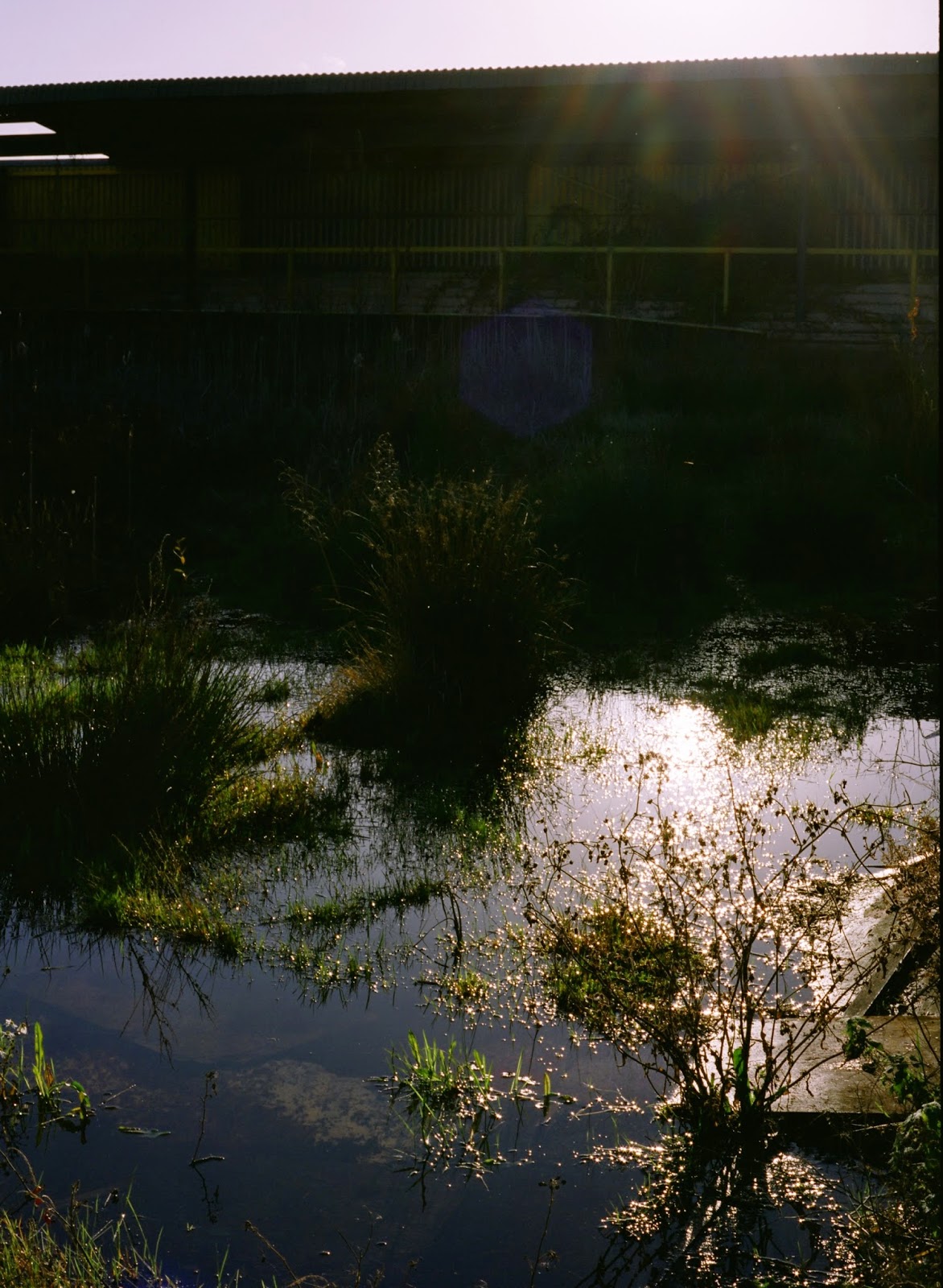Narrative Landscape required the use of either Large or Medium Format camera, I was looking forward to using medium format again for this part of On Assignment, last time around I had only used a Hasselblad, and it was just for portraits, I did struggle at first with getting the exposures correct and focus nicely sharp, I did panic myself into taking some shots which didn't really pay off when you're restricted to 12 or so frames. I was determined to do much better this time round, the theme of narrative landscapes doesn't require a need for portraits, so my confidence was much stronger heading into this project. Since September I have been working with Gloucester City FC, who in October faced a turning point in their history, finally planning to return home to Meadow Park for this first time since the disastrous flood of 2007, leading to seven years of exile across Gloucestershire. I did not want this sit and watch this event pass by, and this was a great opportunity to document the landscape of Meadow Park as it stands, and provide the narrative of it's struggles before it is confined to history.
In class we had a walk around Cheltenham with a Mamiya 645, which I think is a great camera to use, It works like an SLR, but much less comfortable to handle as such, I think that the light meter inside of the viewfinder was accurate, and I felt secure about not fogging film with the automatic back. Working without a tripod, and on a cloudy day, we were using 400 speed film, but the depth of field was poor at larger apertures, with a larger focal plain to cover. On my first shoot at Meadow Park, I used this same set-up, and the results show as I am not happy with the depth of focus in the images that I captured, I also noticed some shots that had missed focus again, which I found using the Hasselblad earlier in the year. I should have been more prepared for this shoot in a few ways, Using a tripod would have allowed me to use smaller apertures, for sharper images across the frame through lower shutter speeds, bring more film, one roll was not enough, using my iPhone to experiment with more shots around the ground.
I had learnt from past mistakes for my return to Meadow Park, I decided to bring a tripod for stronger depth of focus, using the self timer to operate the shutter and also slower film, I wanted to use 160 speed for a cleaner image, and also on the day it was much brighter than the previous visit, so it would be more appropriate to capture correct exposures. The images that I created on this second shoot were an improvement on the first, the focusing was much more accurate due to the depth of field, and stationary tripod. The lighting was not as even this time, it was sunny and not cloudy, but this cast a certain ambience around the ground, as if the sunset was finally setting on it's use. There was a noticeable difference in edits from each shoot as a result, so when putting together the final edit I felt the sharper images from the second shoot were more deserving of inclusion. A small edit of 4 images was restricting, so I had to compromise shots that document minor details around the ground, in favour of more general view images that provide views both into and outside this landscape.
I have enjoyed this project, I have definably experienced an improvement in the way that I operate using a medium format film system, and I engaged in a subject matter that is interesting to me with a story to be told. I could improve in a number of ways in the future however, if I was to start this project again, I would defiantly be more prepared, time management is something I lacked towards the start of this On Assignment module, dictating to myself where to allow time for each section. I feel more comfortable with using a Mamiya 645 now so less time will be spent learning about the system. I'd also like to improve the quality of my final prints, I think that they are not as sharp as they are represented on screen, so I would have to improve in the method of scanning.



























